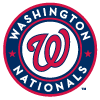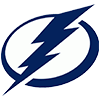This article will look at the recent ADP on Underdog Fantasy's NFL best ball contests and try to identify which mid-round players (later than the 3rd round, earlier than the 12th) offer the most upside for their price. Each blurb will lay out the best-case scenario for the player in question while trying to acknowledge the risks as well. You can read the 'late-round' version of this article by clicking here.
Sign up for Underdog to receive a free 6-month subscription to RotoWire and first deposit match up to $100 with promo code RWNFL. Claim this special offer now at https://play.underdogfantasy.com/pc-MyVn4cbt6l.
Each blurb will describe a best-case (but still reasonable) 2023 scenario with each player while including a Risk measure to account for how likely those best-case scenarios might be.
Travis Etienne, RB, JAC (40.1 Underdog ADP)
Etienne has some concerns and limitations. There's a reasonable ongoing concern around his foot, which caused him to miss his 2021 rookie season with a Lisfranc complication. There are also likely limitations to his workload upside, because Etienne lacks a dense frame and the most carries per game he handled at Clemson was 14 per game in his senior year. The Jaguars foolishly tried to make him a 25-carry back following the James Robinson trade last year and Etienne swiftly, predictably got hurt, to his surgically-repaired foot all the more disturbingly. As much as fantasy owners want monster volume out of every player, they need to understand that it isn't helpful in Etienne's case. The third-round selection of Tank Bigsby is read by some misguided analysts as a concern for Etienne but – setting aside that Bigsby is a mediocre talent and a poor use of the pick (see: Trent Baalke) – the Jaguars desperately needed to find depth behind Etienne, especially since Etienne isn't a 20-carry guy himself. If anything, the Bigsby selection would sooner save Etienne from an injury disaster than it would harm Etienne's fantasy utility.
So why is Etienne a home run pick in the fourth round anyway? The home runs, mostly. Home runs in what should be one of the highest-scoring offenses. Etienne's monstrous explosiveness means he can be a top 10 fantasy back even if 15 running backs have substantially bigger workloads. If the Jaguars are scoring a lot of touchdowns, moreover, then Etienne is likely to be in on many of them. Etienne was a touchdown monster at Clemson, scoring on more than 10 percent of his carries despite averaging an absurd 7.2 yards per carry over 686 carries. That's a volume/efficiency threshold that's borderline impossible – even Barry Sanders averaged only 6.8 yards per carry with a 9.2-percent touchdown rate over 523 carries.
But rather than Sanders, the obvious blueprint for Etienne is Jamaal Charles. Charles was even lighter than Etienne – 200 pounds on a good day – but Charles' usage with the Chiefs is the sort of workload plan appropriate for Etienne. Even Charles started to break down after the Chiefs raised his workload to roughly 18 carries per game, but that 15-to-16 carries per game is the sweet spot. An average of 15 carries per game would equal 255 carries, and with Etienne we have strong reason to assume 5.0 yards per carry or better. Exactly 5.0 yards per carry would equal 1,275 yards, while 5.5 yards per carry would yield 1,403 yards. Etienne is inevitable as a runner.
There is a valid criticism to make of Etienne's 2022 production in that his pass-catching production was disappointing for a 16-game sample, but it should also be understood as a floor rather than something that might regress. Etienne's per-target efficiency was exceptional, to the point that the Jaguars should probably make it a point to design more screen targets for Etienne after he turned 45 targets into 35 receptions for 316 yards (77.8 percent catch rate, 7.0 YPT).
Best-case scenario: 275 carries for 1,600 yards and 10 touchdowns, 55 targets for 43 receptions, 400 yards and two touchdowns
J.K. Dobbins, RB, BAL (57.2 Underdog ADP)
Dobbins has had brutal luck the last two years but could, knock on wood, be the beneficiary of some legitimately good fortune in 2023. If you pair talent like his with good luck, explosiveness will be the result.
Dobbins has already proven explosive, even in a 2022 season where he clearly was not fully normal following what could have been a career-ending knee injury in the 2021 preseason. It's a testament to Dobbins' ferocious competitiveness that he was even able to do what he did last year, which is hobble his way to 520 yards on just 92 carries (5.7 YPC). Now nearly two years removed from the injury, Dobbins should be healthy enough to maintain his trademark explosiveness just as (A) his workload increases and (B) the Ravens offense improves drastically.
Gus Edwards is an excellent backup and will continue to serve a hammerhead role off the bench, but if Dobbins is fully healthy then this will be his backfield. One reason for that, aside from Dobbins' compelling talent, is that the Ravens will throw more and better under new coordinator Todd Monken. Dobbins' fantasy upside was wasted in general by prior coordinator Greg Roman's primitive, predictable playcalling, but it might have been particularly limiting to Dobbins' pass-catching upside, which is of course so important in this PPR era. Even if Dobbins shares some substantial number of carries with Edwards, it won't matter much if Dobbins is going over 40 catches. Dobbins was a very effective pass catcher at Ohio State, so expect him to be a real weapon in that capacity under Monken.
Best-case scenario: 265 carries for 1,450 yards and 12 touchdowns, 50 targets for 40 receptions, 280 yards and two touchdowns
Treylon Burks, WR, TEN (69.6 Underdog ADP)
Burks by most accounts was raw out of Arkansas, with him sometimes being less than well-read on his assignments, but even Burks' greatest critic ought to be able to admit that his raw talent is uncommon. If a college student were immature as a person – an underclassman, moreover – then it would be far from surprising. It would also be unsurprising if a formerly immature person might develop better work habits in the subsequent years. With Burks, we know the light is there and we know the switch is right in front of him. We also know the Titans are desperate for him to reach out and flip the switch.
After a slow start to his Tennessee career, including a disappointing training camp, Burks showed signs of slowly earning the confidence of Mike Vrabel. At the very least Burks demonstrated his talent for Vrabel, as the Titans called some quick-read, borderline designed targets for Burks even early in the year. Where Burks needed to improve was in base functions, which is to say he needed to get better on plays that weren't designed touches. A team can make 20 snaps for any sub-package player on offense, but if he's running routes on another 20 plays then you won't be able to hide his limitations in that extended exposure.
Encouragingly for Burks, his snap count steadily increased throughout his rookie year, with him playing 47, 47 and 52 snaps in his final three games. The key to Burks' next step is whether he can maintain his general target rate (52 on 377 snaps) even while drastically increasing his snap count. Sometimes you see sub-package players post per-snap usage rates that obviously aren't sustainable in base functions, and there's a hint of that in Burks' numbers since he did initially function in a sub-package rollout. But if Burks is still improving at his craft then his per-snap target rate could hold even as he goes over 900 snaps on the year.
If Burks maintains his 2022 target rate in 2023 then he will likely smash, almost regardless of how bad the Titans quarterbacks are. Those 52 targets on 377 snaps prorate to 130 targets at 950 snaps. If Burks averages even 7.0 yards per target then that target rate and snap count would put him right around 1,000 yards receiving. If Ryan Tannehill can keep it together the whole while, then that YPT would likely be over 8.0, just as it was in Burks' rookie year.
Whatever else might be the case, we know the Titans are completely dependent on Burks to carry their 2023 passing game. Nick Westbrook-Ikhine can't draw targets rapidly enough to step up, Kyle Philips is a mediocre slot prospect, and Chris Moore can only do so much otherwise. Burks and tight end Chigoziem Okonkwo are probably the only Titans players capable of going over 700 yards receiving this year.
Best-case scenario: 140 targets for 85 receptions, 1,200 yards and eight touchdowns
Jordan Addison, WR, MIN (70.9 Underdog ADP)
It might seem aggressive to list a rookie wide receiver on here – it's unfair to expect a rookie receiver to be among the best NFL receivers in general – but such is the burden Addison has brought upon himself with his truly incredible collegiate production.
Those who might be anxious about Addison have an understandable concern with his physical traits. Addison is very skinny at 5-foot-11, 173 pounds, and his 4.49-second 40 was not quite as good as you'd like to see from someone so slight. Reasonable as these concerns are, they don't hold up under scrutiny when you consider the entirety of Addison's prospect profile. Addison will be a very good starting receiver, and any lack of physical traits on his part would merely be explanation for why he's, say, a top-20 receiver rather than a top-five one. If Addison were any bigger and faster it would quickly become unfair, because every other trait in his profile is sterling.
It's difficult to put into perspective just how dominant Addison was as a collegiate receiver. Particularly in his first two seasons at Pittsburgh – the most insightful data points in his profile since he was just 18 and 19 years old in those two seasons – Addison was point-blank one of the very best receivers in college football history. Addison's true freshman year was highly successful, but to skip to the most jarring details we're going to look at his sophomore year. Addison drew 145 targets in 14 games, catching 100 for 1,593 yards and 17 touchdowns, which comes out to an absurd 11.0 yards per target at a 69.0 percent catch rate.
Those numbers are wild enough at a glance. Even people new to football can recognize that those are big numbers for a wideout. There are additional details, though, that cast Addison's 2021 season in an even more impressive light. Specifically, not only did Addison produce monstrous volume, he did so at a high target share percentage and still easily outproduced the Pittsburgh base line. Whereas Addison caught 69.0 percent of his target at 11.0 yards per target, the Pittsburgh offense overall 'only' completed 67.5 percent of its passes at 8.7 yards per attempt. To clear that baseline by 1.5 catch percentage points and 2.3 yards per target is incredible, and what's even more remarkable is that Addison did so while carrying 33.7 percent of Pittsburgh's yardage share. Even more impressive yet is the fact that the receivers he pushed aside – Taysir Mack and Jared Wayne – are respectively four and one year older than Addison. This level of dominance is something you almost never see.
Justin Jefferson is probably the best receiver in the NFL, and Addison won't be approaching heights like those. It could still shock people just how good Addison is all the same. Production like his point blank never happens, and the concerns around his physical traits are probably a bit overplayed. There was a receiver in the '90s who also weighed 173 pounds at the combine, and ran an even-worse 4.55-second 40. His name is Isaac Bruce.
Best-case scenario: 130 targets for 90 receptions and 1,100 yards and eight touchdowns
Rondale Moore, WR, ARI (131.0 Underdog ADP)
This is kind of more of a late-round target than a mid-round one, but I couldn't find room for Moore in the late-round article previously posted.
Moore (5-foot-7, 181 pounds) has obvious limitations due to his frame and has a mounting list of injury concerns compounding those issues. There is plenty of risk with Moore even before you account for the quality of the terrible offense he plays in. He missed the first three games of 2022 with a hamstring issue, then underwent surgery in December to repair a core injury. Moore's last year at Purdue was defined by nagging injury, too.
With all that said, and with no argument against the fact that the Cardinals are a truly hopeless team, there is still reason to target Moore at this price. His production at Purdue and even with the Cardinals compellingly argues for his talent, and his athletic testing is good enough to think he'll continue to overcome his otherwise problematic frame.
I would argue that since-fired Kliff Kingsbury did a poor job of utilizing Moore the last two years, especially his rookie year, by forcing Moore to run a primitive route tree that almost exclusively functioned within five yards of the line of scrimmage. Of course Moore is not going to win many jumpballs with his build, and he's obviously dangerous on screens, but Kingsbury's predictability became Moore's problem. And yet, Moore did well. Even with the brutally low ADOT and low yards per catch, it was clearly a success for Moore to accumulate 95 catches for 849 yards on 120 targets. To average over 7.0 YPT with such a low ADOT and bad playcalling is almost impressive in itself, but when you factor in the 79.2 percent catch rate it's clear that Moore was one of the few good things about the Arizona offense.
Moore's durability and offense are working against him, true, but that was the case the last two years, too. The real difference now is that DeAndre Hopkins is gone, opening up a mammoth target void. Meanwhile, presumed WR1 Marquise Brown has his own limitations related to build and durability, so that has to be considered too when weighing Moore's own durability issues.
Best-case scenario: 850 snaps, 120 targets for 85 receptions, 915 yards and five touchdowns, 15 carries for 100 yards








































